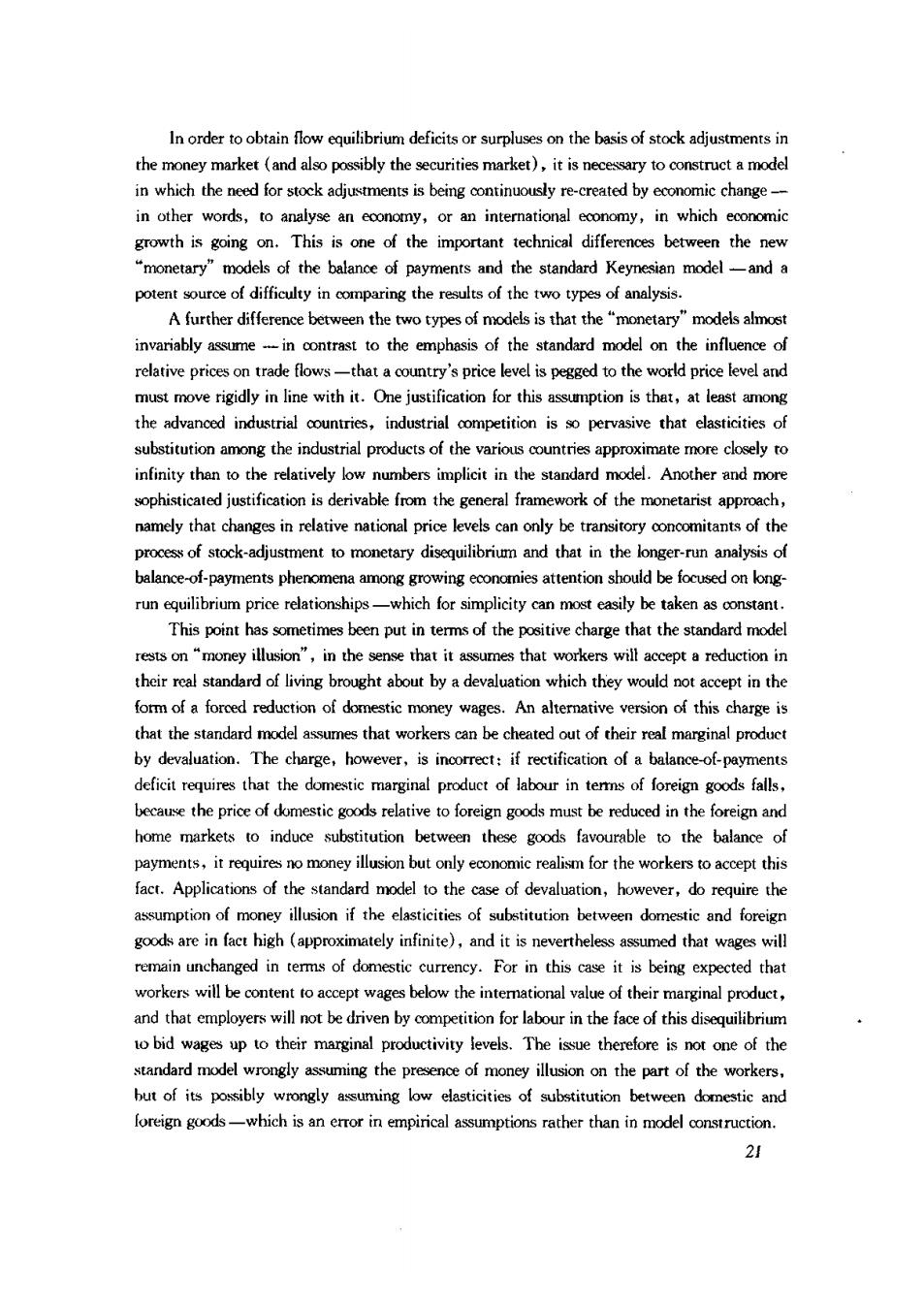正在加载图片...

deficitsor the basis of in the money market (and also possibly the securities market),it is necessary to construct a model in which the need for stock adjustments is being continuously re-created by economic change- growth is going on.This is one of the important technical differences between the new "monetary"models of the balance of payments and the standard Keynesian model-and a potentour of difficulty in omaring the the two types of analysis A further difference between the two types of models is that the "monetary"models almost invariably assume-in contrast to the emphasis of the standard model on the influence of relative priceso trade flows-thaaury's price level is pegged to the levelad must move rigidly in line with it.One justification for this assumption is that,at least among the advanced industrial countries.industrial competition is so pervasive that elasticities of infinity than to the relatively low numbers implicit in the standard model.Another and more sophisticated justification is derivable from the general framework of the monetarist approach, process of stock-adjustment to monetary disequilibrium and that in the longer-run analysis of balance-of-payments phenomena among growing economies attention should be focused on ng- -which for simplicity can mos This point has sometimes been put in terms of the positive charge that the standard model rests on"money illusion",in the sense that it assumes that workers will accept a reduction in form of a forced reduction of domestic money wages.An alternative version of this charge is that the standard model assumes that workers can be cheated out of their real marginal product by devalation.The charge,however,rectifictionbaef-pay deficit requires that the domestic marginal product of labour in tems of foreign goods falls because the price of domestic goods relative to foreign goods must be reduced in the foreign and home marketso induce substitution between these gods favourable to the balance payments,it requiress no money illusion but only economic realism for the workers to accept this fact.Applications of the standard model to the case of devaluation,however,do require the assumption of mon and foreigr goods are in fact high (approximately infinite),and it is nevertheless assumed that wages will remain unchanged in terms of domestic currency.For in this case it is being expected that workers will be content oaccept wages below the intem of their marginal product, and that emplovers will not be driven by competition for labour in the face of this disequilibrium bid wages upto their margina productivity levels.The issue therefore of the e workers. but of its possibly wrongly assuming low elasticities of substitution between domestic and foreign goods-which is an error in empirical assumptions rather than in model construction. 21